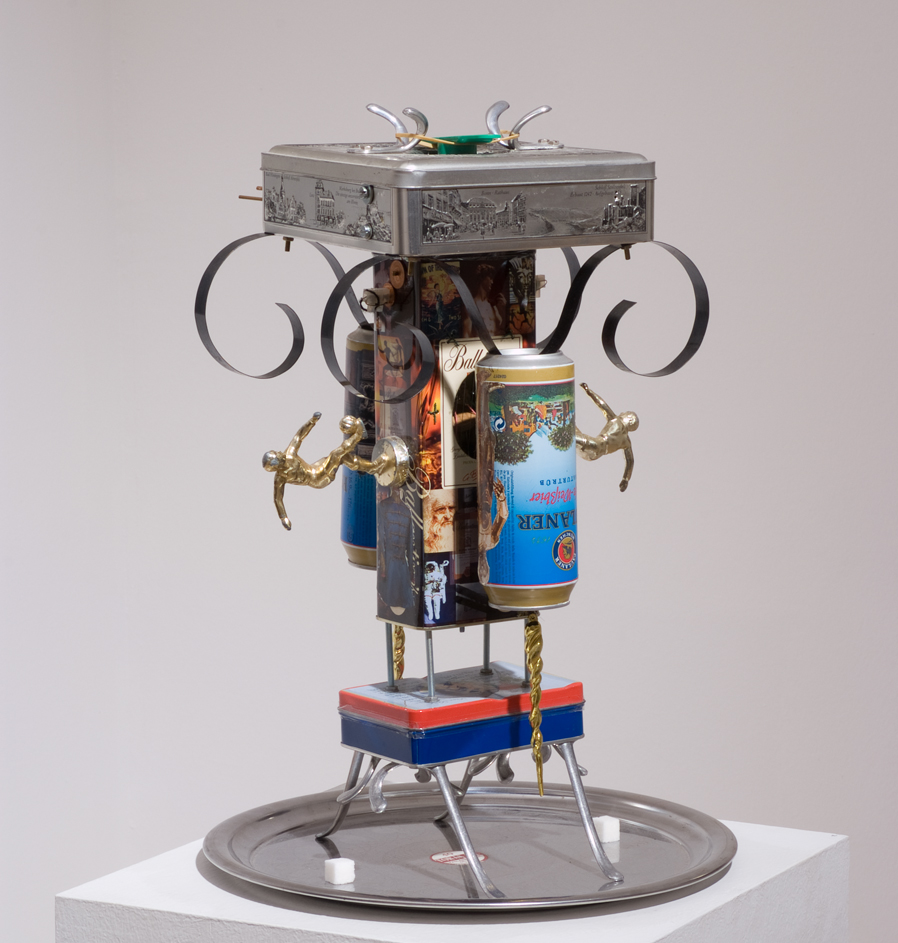In front of us we have a Christmas biscuit box, tea box, a small can, and all sorts of things of this kind, turned into a tower-like construction that constitutes the orchestra, while the solar battery is the conductor, and the strings, applied in a refined manner at various points, ensure the melody. The audience has control over this improvised "orchestra", since they can manipulate the light sources, if they wish. In turning on the light on the top of similar sculptures like this, they could also bring forth a sound that is reminiscent of a minuscule chamber orchestra. Bálint Bori uses solar energy to elicit sound from the guitar strings installed in the metal boxes. The strings resonate, and the walls of the boxes relay the melody to a lamp switched on or to rays of sunlight. The use of sunlight or artificial light as a driving force and creative element is one of the most beautiful components of this series of works that are built according to tradition. The sculptures recall light-manipulating artworks from ancient Mexico, Egypt and other civilizations. Bori has created a dadaist "readymade" sound object that is made of nothing else but found elements, and which here resonates as a complex artefact from a lest world - the one before everything collapsed around us. The one before or after our digital era of hyper-connection. The piece is a reflection on the hypothetical, symmetric characteristics of the past, the future and the present. Half-time, the change of sides ensuring a level playing field, a football player who barely touches the ball, is a moment suspended between the past and the future, the here and now, the central intersection.
Since 1985, Bálint Bori has been living and working in Berlin. He creates kinetic objects, drawings and he plays musical instruments of his making. He is interested in the relation between acoustic and visual manifestations of random and periodical phenomena, the areas between art and science disciplines and the interactions between the performing, literary and visual arts. He was a member of the INDIGO group of artists in the 70s and the 80s, which is also known for its most famous member, Miklós Erdély. The name of the group, an abbreviation of Inter-Disciplinary-Thinking, refers to their interest in questions regarding the functions and possibilities of art, which are moreover considered to be inseparable from creative thinking in society and life. His sound installations are an extension of the openness to existential sensitivity, as dictated by the poetics of INDIGO. His objects, the Cicadas, are random vibration pick-up generators. These purposeless mechanisms transform molecular vibrations into acoustic phases and convert light energy into kinetic energy. They are made of everyday objects and refuse that evoke the past and the future. His last major solo exhibition was held in Berlin, 2013.


